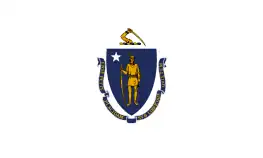George Leonard | |
|---|---|
 | |
| Member of the U.S. House of Representatives from Massachusetts | |
| In office March 4, 1789 – March 3, 1793 | |
| Preceded by | None (new seat) |
| Succeeded by | None (at large) |
| Constituency | 7th district (1789–91) 6th district (1791–93) |
| Member of the U.S. House of Representatives from Massachusetts | |
| In office March 4, 1795 – March 3, 1797 | |
| Preceded by | None (at large) |
| Succeeded by | Stephen Bullock |
| Constituency | 7th district (1795–97) |
| Member of the Massachusetts House of Representatives | |
| In office 1801–1802 | |
| Member of the Massachusetts Senate | |
| In office 1792–1793 | |
| Personal details | |
| Born | July 4, 1729 Norton, Province of Massachusetts Bay, British America |
| Died | July 26, 1819 (aged 90) Raynham, Massachusetts, U.S. |
| Political party | Pro-Administration Federalist |
| Spouse | Experience (White) Leonard (m. 1759-1819, his death) |
| Children | 2 |
| Alma mater | Harvard College |
| Profession | Attorney |
George Leonard (July 4, 1729 – July 26, 1819) was an American lawyer, jurist, and politician from Norton, Massachusetts. Besides service on state court benches and in both houses of the state legislature, he represented Massachusetts in the U.S. House of Representatives.
Biography
Leonard was born in Norton, Massachusetts on July 4, 1729, the son of George Leonard (1698–1778) and Rachel (Clapp) Leonard.[1] He was educated locally and graduated from Harvard College in 1748.[1][lower-alpha 1] Leonard received his Master of Arts degree from Harvard in 1751.[2] He began the study of law while serving as Bristol County's register of probate, an office he held from 1749 to 1783.[1] He was admitted to the bar in 1750 and practiced in Norton.[1] From 1764 to 1766, Leonard served as a member of the Massachusetts Provincial Assembly.[1] From 1770 to 1775 he was a member of the Massachusetts Executive Council.[1]
From 1784 to 1790, Leonard was judge of the probate court in Bristol County.[1] He was judge of the common pleas court 1785 to 1798. Leonard was the court's chief judge from 1798 to 1804.[1] During his career, Leonard held several local offices, including town meeting moderator, town selectman, town clerk and treasurer, town assessor, and commander of the Norton-area militia with the rank of colonel.[1]
In 1788, Leonard was elected to the United States House of Representatives as a Pro-Administration candidate.[1] He was reelected in 1790 and served in the 1st and 2nd U.S. Congresses (March 4, 1789 to March 3, 1793).[1]
Leonard served in the Massachusetts Senate from 1792 to 1793.[1] In 1796, he was again elected to Congress, this time as a Federalist.[1] He served in the 4th Congress, March 4, 1795 to March 3, 1797.[1] In 1801 and 1802, Leonard served in the Massachusetts House of Representatives.[1]
In retirement, Leonard was a resident of Raynham, Massachusetts. He died in Raynham on July 26, 1819.[2] Leonard was buried at Norton Center Cemetery in Norton.[3]
Family
In 1759, Leonard married Experience White (1738–1827).[1] They were the parents of two daughters, Peddy (1761–1850) and Fanny (1762–1779).[4] Peddy Leonard was the second wife of Jabez Bowen.[5][lower-alpha 2]
Notes
- ↑ In 1753, Leonard received the honorary degree of Master of Arts from Yale College.[2] In 1804, Brown University presented Leonard an honorary LL.D.[2]
- ↑ Peddy Leonard Bowen's unusual first name was a diminutive of her mother's.[5]
References
- 1 2 3 4 5 6 7 8 9 10 11 12 13 14 15 16 Clark, George Faber (1859). A History of the Town of Norton, Bristol County, Massachusetts, from 1669-1859. Boston, MA: Crosby, Nichols, and Company. pp. 478–479 – via Google Books.
- 1 2 3 4 Brown University (1895). Historical Catalogue of Brown University, 1764–1894. Providence, RI: P. S. Remington & Co. p. 346 – via Google Books.
- ↑ Harrison, James L (1950). Biographical Directory of the American Congress, 1774-1949. Washington, DC: U.S. Government Printing Office. p. 1455 – via Google Books.
- ↑ Leonard, Brad (November 25, 2013). "Fifth Generation: George Leonard (1729–1819)". Descendants of James Leonard 1620-91, Ironworker, of Taunton, Massachusetts. Missoula, MT: Brad Leonard. Retrieved March 3, 2022.
- 1 2 Trent, Robert (1976). Pilgrim Century Furniture: An Historical Survey. New York, NY: Main Street/Universe Books. p. 38. ISBN 978-0-8766-3946-7 – via Google Books.
External links
- United States Congress. "George Leonard (id: L000246)". Biographical Directory of the United States Congress.
- George Leonard at Find a Grave

